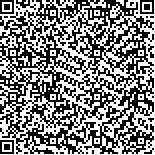| 本文已被:浏览 1623次 下载 2106次 |

码上扫一扫! |
|
|
| 泥蚶人工选育群体的微卫星分析 |
|
田 野1,2, 邵艳卿2,3, 肖国强2,3, 滕爽爽2,3, 柴雪良1,2,3, 张炯明2,3, 方 军2,3
|
|
1.温州医科大学 检验医学院 生命科学学院;2.浙江省海洋水产养殖研究所;3.浙江省近岸水域生物资源开发和保护重点实验室
|
|
| 摘要: |
| 采用微卫星分子标记技术对人工选育的泥蚶(Tegillarca granosa)群体进行遗传多样性分析。结果表明: 在12 个标记位点中, 每个位点的等位基因数为2~9 个, 观测杂合度平均范围0.4195~0.4725, 期望杂合度平均范围为0.5700~0.6323。哈迪-温伯格平衡检验结果显示, 在48 个群体-位点组合中有32个群体-位点组合显著偏离平衡。Shannon 遗传多样性指数为1.0608~1.2242。群体间的遗传分化系数Fst值从0.0347~0.4549, 平均值0.1930; 基因流Nm 值为0.2996~6.9617, 平均值2.3367; 群体近交系数Fis范围0.0052~0.7135, 平均值0.2468。结果表明, 连续的人工选育过程, 群体的遗传多样性仍然比较高, 但选育过程对群体的遗传多样性和遗传分化有一定程度的影响。 |
| 关键词: 泥蚶 微卫星 选育群体 遗传多样性 |
| DOI:10.11759/hykx20140624001 |
| 分类号: |
| 基金项目:国家高技术研究发展计划项目(2012AA10A410); 国家水产种质资源平台运行服务项目(2014DKA30470); 浙江省重大科技攻关项目(2012C12097-4) |
|
| Analysis of genetic variability in selective bred populations of Tegillarca granosa by microsatellites |
|
|
| Abstract: |
| In this paper, microsatellites DNA technique was used to examine the genetic variability of selective bred blood clam (Tegillarca granosa) populations. The results indicated that among the 12 microsatellites, the number of alleles per loci was 2 to 9. The range of the average observed heterozygosities (Ho) of these populations was 0.4195~0.4749, and the range of the average expected heterozygosities (Ho) of these populations was 0.5700~0.6323. Among the 48 population-locus cases, 47 cases were deviated from Hardy-Weinberg equilibrium (P<0.05). The shannon genetic variability index ranged from 1.0608 to 1.2242. The Fst value was from 0.0347 to 0.4549 with a mean value of 0.1930. The gene flow value (Nm) ranged from 0.2996 to 6.9617 with a mean value of 2.3367. The Fis value ranged from 0.0052 to 0.7135 with a mean value of 0.2468. The statistic analysis demonstrated that the genetic variability of populations is still in high level after a successive selective breeding, but this process has certain effect on genetic variability and differentiation of the populations. |
| Key words: Tegillarca granosa microsatellites Selection-breeding population genetic variability |
